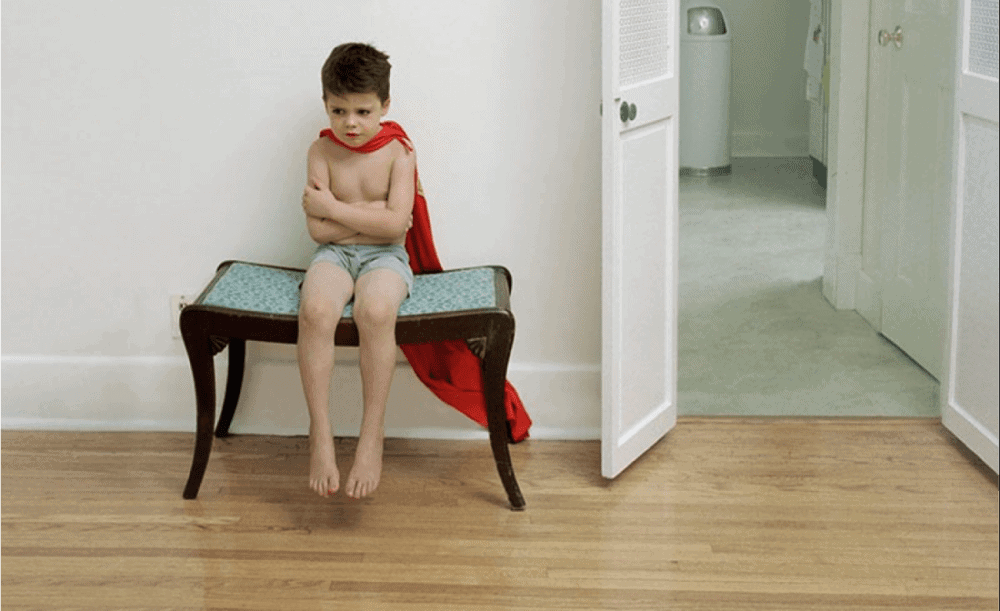Time-Out: Do Time-Outs Really Work? Problems with Time-Out (And What to do Instead)

Your pediatrician recommended it, your friends swear by it, and your child’s preschool uses it incessantly. But, every time YOU try to send your child to time-out, the 5-minute time-out turns into a 30-minute throwdown of epic proportions.
For most parents, using time-out to “teach kids a lesson” often increases the power struggle and ends in frustration, anger, and fails to achieve the desired outcome.
Or, in other cases, getting the child to go to time-out isn’t necessarily a battle, but the child continues to misbehave once their time in the corner is finished.
While well-meaning parents have used time-out as an alternative to more punitive methods like spanking, it doesn’t seem to reap the long-term benefits we hope for. After all, we are running a marathon, aren’t we?
When we take a short-sighted approach to discipline, we leave the door open for long-term problems. Sure, a time-out might curb behavior in the moment, but it doesn’t promote our long-term goal of raising emotionally stable, resilient, and empathetic children.
If you are a proponent of time-out, this is not a finger-waving post of judgment, I promise. I, too, was once a time-out queen myself. But, as I found the tool to be increasingly ineffective in my home, I knew I needed other tactics.
Why Are Time-Outs An Ineffective Long-Term Solution?
There are many reasons time-outs don’t work for the long haul. For one, times have changed. The concept of time-out as a discipline technique dates back to 1958. And while we can appreciate a lot of what the 50s brought us, our world is very different, and the way we communicate, behave, connect, and respond as human beings is very different as well.
But secondly, and perhaps more convincingly, let’s consider how time-out is used by examining a few questions.
Does the time-out have any direct relation to the behavior?
Children see the world in black and white – they want things to feel fair and consistent. When disciplining your child, it’s important to ensure the consequence is related to their misbehavior (i.e. they don’t get sweets if they refuse to brush their teeth, or they can’t play with their soccer ball if they kicked it inside the house, etc.).
When it comes to time-out, however, the consequence is almost never related to the behavior. How does sitting in a corner or time-out chair relate to hitting your brother? Or throwing your food at the dinner table? Or using foul language? In short, it doesn’t.
If your child frequently resists going to time-out or throws a huge tantrum over sitting in the corner, you can be sure this is their way of protesting the fairness of the consequence!
What does the child learn during the time they are isolated?
More often than not, time-out is a break – a time when the child is expected to sit quietly while the parent continues their task until the timer goes off. But what does the child learn in those 5 minutes of silence?
Are they learning other ways to respond? Are they developing new strategies for behavior? Are they thinking about the poor choices they made and what they could do differently?
Or, are they thinking how unfair and mean Mom or Dad is for putting them in a corner to start with? More likely the latter, don’t you think?
Does time-out support an emotional connection between the child and parent?
The latest research tells us that children learn best when they have a secure emotional connection with the parent. For decades, parents have opted for time-outs over its punitive cousin, spanking – believing that because time out doesn’t inflict physical harm, it doesn’t cause any harm.
We are learning now this isn’t the case. In their Time article, Dr. Dan Siegel and Dr. Tina Bryson, tell us:
“Decades of research in attachment demonstrate that particularly in times of distress, we need to be near and be soothed by the people who care for us. But when children lose emotional control, parents often put them in their room or by themselves in the “naughty chair,” meaning that in this moment of emotional distress they have to suffer alone…
…When the parental response is to isolate the child, an instinctual psychological need of the child goes unmet. In fact, brain imaging shows that the experience of relational pain–like that caused by rejection–looks very similar to the experience of physical pain in terms of brain activity.”
While time-out in and of itself is not likely to give your child abandonment issues, this new research should inform our parenting decisions. If given the choice – and we are given the choice – shouldn’t we strive to use tools that foster more emotional connection when we can?
Does time-out teach the child the appropriate behavior you want them to use in the future?
When a child hits their sibling for taking a toy, does sitting in a chair help them practice a more appropriate behavior?
With only limited hours in a day to guide and instruct our children, how can we be most effective in those moments?
We (and our children) are better served by first showing empathy.
Obviously, the child is having a tough time in that moment. By showing empathy – “Wow, you seemed really mad/frustrated, etc.” – we make an emotional connection with our child. This makes him more open to calming down and learning for the future.
By sending our kids to time-out, we miss the opportunity to model empathy for them. We lose the privilege of teaching them empathy through our own actions and response.
The Bottom Line
The bottom line is that time-out – like its “counting-to-three” counterpart – can disrupt the behavior in the moment, but unfortunately doesn’t work long-term to teach more appropriate responses. Furthermore, it’s not conducive to helping you build a long-term, mutually respectful relationship where your kids will listen and learn without threats, nagging, or time spent in corners.
If you’ve been using time-out, take comfort in knowing you can enjoy better results by using more effective strategies that will bring out the best in your kids without the negative side effects.
So let’s put time-out in time-out for good starting with these strategies:
Alternatives to Time-Out
Before I give you some strategies that work, let me say, if you’ve been using time-out for years, this post is not meant to discourage you on your parenting journey. Nor is it intended to make you feel inadequate as a parent. Trust me, we’ve been there.
Here at Positive Parenting Solutions, we are living proof that knowledge is power. When I finally learned strategies that worked, an unbearable weight was lifted and my frustration was gone. Our goal is to equip you with knowledge so you can be the best parent for your kids.
Children Under 3
It’s important to know that a time-out is NOT the same as removing a child from a situation. For children under the age of three, try using one or more of the following Remove and Redirect strategies when misbehavior rears up:
- Remove the object
- Remove the child from the environment
- Redirect the child’s attention
- Redirect the child’s activity
It’s critical you understand that children are independent beings and – even as young as three – they know it. Imposing our will, even on our children is a sure recipe for a power struggle.
Children Over 3
We are staunch supporters of proactive parenting. When parents understand that they can proactively prepare their child for difficult situations, they reduce the likelihood that they will need to reactively respond.
While it’s nearly impossible to cover all alternatives to time-out, here are 3 simple tools you can implement now to reduce the need for reactive consequences.
1. Fill the Attention Bucket
Kids need attention, plain and simple. If we don’t keep that “attention bucket” filled with positive attention, kids will seek out any attention they can get – even negative.
They’ll push our buttons with negative behaviors because, to a kid, even negative attention is better than no attention. This doesn’t mean you have to be at your child’s side 24/7 – just take a few intentional minutes a day to spend one-on-one with your child, distraction-free and do something they want to do.
It will reap immense rewards in their behavior. Let the phone call go to voicemail. Ignore the incoming text alert. Focus that time on your child. You won’t regret it.
When you fill your child’s attention bucket positively and proactively, your kids will become more cooperative and less likely to seek out attention in negative ways.
Life is busy for everyone, and finding extra time in the day may be daunting at first, but think of this as an investment in your relationship with your children and in improving their behavior. When it comes to knowing how to discipline your child, giving them what they need to avoid poor behaviors can have a great impact.
2. Take Time for Training
The root word of discipline is disciplus which simply means “pupil” or “student.” If we are disciplining our children, we are essentially trying to teach and instruct them – not punish them.
The best way to discipline your child is to help her make better choices. Role playing is a great strategy to help children learn other ways of responding. For example, you could talk through the following scenarios using a calm voice and take turns playing each role.
- Sharing: “I’d really like to play with that tractor when you’re done.”
- Snack time: “I’d like a snack, please.”
- Clean-up: “It’s time to clean up our toys.”
Switch roles and pretend you’re the child, and let your little one direct you through making better choices.
When you see them making the right choices, be encouraging. “I see you worked hard to clean up the playroom all on your own! That’s such a big help. I really appreciate it.” or “Thank you for sharing the book with your brother. How kind!”
3. Set Limits and Stick to Them
Kids thrive when they have structure and know their boundaries. Don’t go overboard with hundreds of rules, but focus on what’s most important for your family. Be clear about the ground rules and what happens when someone breaks the rules – make sure that everyone understands the consequences ahead of time and that the consequence is related to the misbehavior.
If they forget to put away their dishes after dinner, they have to load and unload the dishwasher. But cleaning their room because they didn’t do their homework isn’t related, and therefore, not an appropriate consequence.
Most importantly, be consistent. Follow through every time with the agreed-upon consequence when kids push the rules.
Final Thoughts
I get it, you still might be thinking, “But what about when my child hits?” Or “What should I do when they use foul language?”
I hear you. You still want some more in-the-moment tools to help when those power struggles rear their ugly head. Unfortunately it’s impossible to cover all potential scenarios in one little blog post, but I’d love for you to join me for my FREE ONLINE CLASS where I will teach you how to get kids to listen without nagging, yelling, or losing control. (Trust me, it will be the best hour you’ve spent in a long time!)
Overall, my friend, just remember that disciplining is simply teaching your child how to learn new skills and make more appropriate choices.
So stay calm, be firm, give them the attention they need, and set clear boundaries and stick to them.
As always, we are here when you need us and would love to have you experience the life-changing effects of Positive Parenting Solutions!
What You Should Do Next:
1. Get Quick Actionable TIPS delivered to your inbox
Sign up for my newsletter for parenting tips to help you create a happier home and become the parent you always wanted to be. Plus, when you subscribe, I'll also send you a copy of our strategy-packed guide 10 Tips for Better Behavior – Starting NOW!
2. Unlock the secrets to easier parenting in my FREE CLASS
Register for my free class called How to Get Kids to Listen, Without Nagging, Yelling or Losing Control. Classes run several times per week to accommodate your busy schedule.
3. Transform your family with the 7-Step Parenting Success System® Course
Join the hundreds of thousands of parents who have transformed their families with the 7-Step Parenting Success System® Course. Learn the tools you need to raise happy, respectful, responsible kids and create the family life you always dreamed of having.
About the Author





